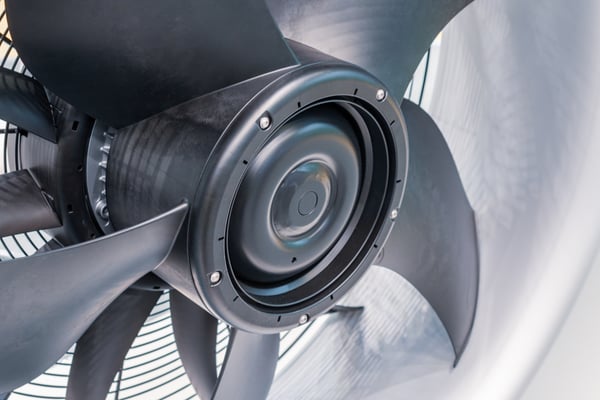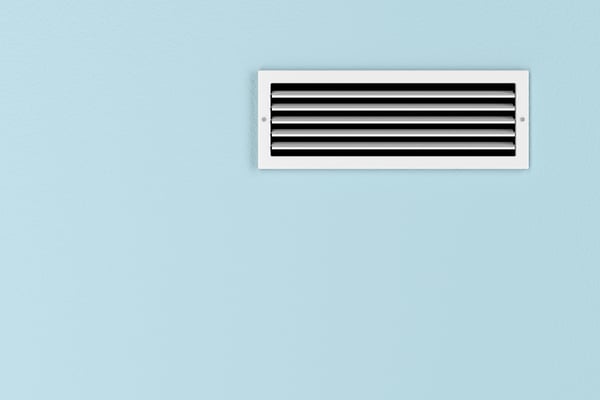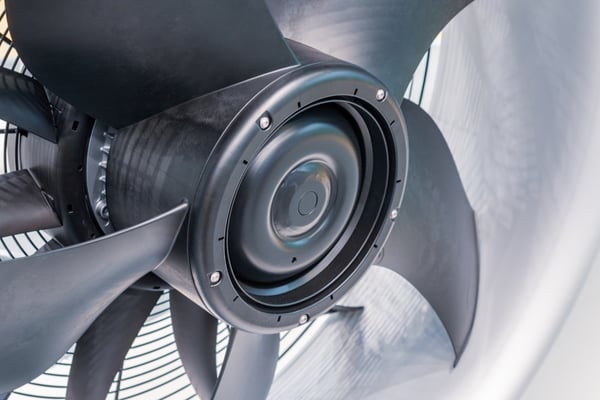Controlling the direction of airflow is very important when the air in a building may contain harmful particles. According to health authorities, coronavirus transmission occurs mainly over short distances. When an infected person coughs or sneezes, others can be exposed to droplets of the virus, especially within six feet. However, airborne transmission cannot be ruled out: smaller, lighter droplets can remain airborne, traveling more than two meters from the source.
HVAC engineers can control air movement by applying a basic principle of physics: air moves from areas of high pressure to areas of low pressure. Airborne droplets with SARS-CoV-2 are unlikely to move into a room with higher air pressure than the source. Depending on the application, a room's ventilation system may use positive or negative pressurization:
- Positive pressurization means that a room has a higher air pressure than the surrounding environment.
- On the other hand, negative pressurization indicates lower air pressure than adjacent areas.
In both cases, pressure is measured as a positive value, since negative pressure does not make sense from a physical point of view. The terms positive and negative are defined in relation to your surroundings and do not refer to absolute pressure (always positive).
Set up your HVAC system to improve air quality and prevent COVID-19.
By upgrading your HVAC system for COVID-19 prevention, you can create safer indoor conditions in your building. This will help resume normal operations when stay-at-home orders are lifted and buildings are able to reopen.
When is positive pressurization used?
Positive pressurization is used to keep air from other areas out of a room. For example, if you have a warehouse with sensitive materials, positive pressurization can be used to gain better control of indoor air conditions.
- Hospitals typically use positive pressurization to treat patients with weakened immune systems.
- This prevents air from leaking into the room from other areas, protecting the patient from airborne pathogens.
To achieve positive pressurization, the air supply rate must be greater than the exhaust rate. For example, if you supply 1,000 cfm to a construction area while depleting 800 cfm, you will achieve positive pressurization. Since the air supply is greater at 200 cfm, the direction of air movement will be outward.
When is negative pressurization used?

Negative pressurization keeps air from escaping, just as positive pressurization keeps unwanted air out. Negative pressurization is typically used when a room contains a source of air pollution. In this case, harmful particles are directed towards the exhaust system, without allowing them to spread to other areas of the building.
- Hospitals use negative pressurization to treat coronaviruses and other infectious diseases.
- This way, airborne pathogens cannot spread to other areas, protecting medical staff and other patients.
Because negative pressurization traps air in a room, pathogens are more effectively captured by air purification and exhaust systems. Outside of healthcare settings, negative pressurization is typically used in environments with sources of moisture and air pollution. Some examples are kitchens, bathrooms and garages.
By combining positive and negative pressurization, HVAC engineers can control the direction of air movement inside buildings. This helps prevent the spread of harmful particles, including coronavirus droplets.
Ventilation measures to complement pressurization

A single design feature cannot prevent coronavirus alone, and HVAC measures are not a substitute for guidance provided by health authorities. This includes social distancing, frequent hand washing, and personal protective equipment (PPE) when necessary.
To make building interiors as safe as possible, pressurization can be combined with other measures that improve indoor air quality:
- Increase ventilation of outside air as much as possible, even in partial occupancy. Demand-controlled ventilation (DCV) systems should be temporarily disabled as they reduce airflow in response to occupancy.
- Improve your air filtration by upgrading to at least MERV 13, which is hospital-grade filtration. HEPA filters are even more efficient – not all ventilation systems can handle them, but they are also available as portable air filters.
- Ultraviolet germicidal irradiation (UVGI) can kill pathogens, both on surfaces and in the air. Radiation in the UV-C frequency band is the most effective against germs.
When airflow is controlled with room pressurization and the HVAC system is enhanced with the measures described above, the risk of airborne transmission of COVID-19 is greatly reduced. Keep in mind that every building is unique – to find the ideal combination of air quality measurements, a professional assessment is the best starting point.

